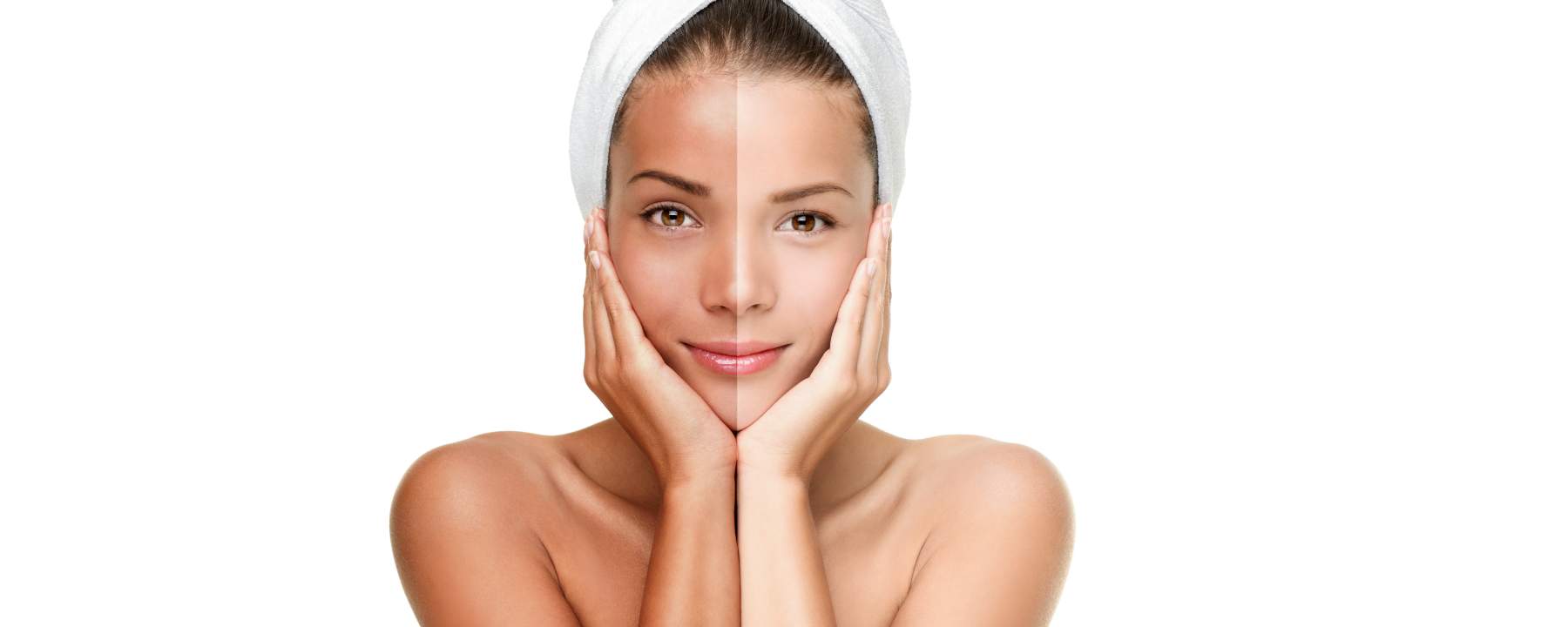
Skin and skin types
No UV protection from self-tanner
Psychology plays a major role in the use of self-tanning products. One the one hand, you feel good and have a positive body image. However, there is also the risk that you will forget to apply sunscreen the next time you sunbathe.
It is tricky to say whether a dark complexion or elegant pale skin is more popular. At least not today. Open the history books, and you will be able to see the trends for entire population groups and social strata. Looking at these trends inevitably reveals the significance the sun had for society. The fact is that society has changed its attitude to the sun several times over the past few centuries. It was often related to differentiating rich from poor, those at the top from those at the bottom. Read more in our article about the inventors of sunscreen.
These days, wanting a dark complexion is more of a personal need, a personal desire for your own well-being. Everyone, regardless of their gender, defines “well-being” differently. Cosmetics have become more individual. And the cosmetics industry is always looking for new solutions and ways to respond to the needs of consumers. Self-tanners are a good example of this. Because we will not tire of mentioning that a healthy tan, caused or obtained by copious amounts of sunbathing, does not exist. The sun and its UV rays are important for our lives and health, but it is also important to be sensible with them and protect yourself sufficiently from too much.
Visible signs of excessive exposure to the sun
- Sunburn (mainly UV-B, partly UV-A)
- Premature skin aging / wrinkles / leathery skin / moles or liver spots
- Skin cancers (basal and squamous cell carcinoma, melanoma)
- Cataracts
With self-tanning products, you do not have to expose yourself and your skin to UV rays to get a dark complexion. Basically, you apply the lotion and enjoy the tanned look. With a single application, the skin tone lasts for a few days and fades to a “normal” skin color. But how does it all work? First things first: Self-tanning products come in a variety of different forms. They are available as creams, body lotions, sprays or wipes for in-between use.
Tanning cream discovered by chance
The active ingredient dihydroxyacetone (DHA), which also sometimes contains erythrulose, tints the skin. Important to know: The self-tanners containing these sugar molecules only act on the surface. The active ingredients react with the top layer of the skin, a corneal layer made up of dead cells. The result of this bonding, or chemical reaction, is the orange-brownish discoloration of the skin.
By the way, DHA is an artificial sugar. In 1920, scientists wanted to use DHA as a sweetener. However, the substance was not suitable for this. Almost 30 years later, a coincidental discovery was made. Doctors used DHA as medicine and observed how droplets of DHA left brown spots on patients’ skin. The idea of a tanning cream was born.
Best tips to protect yourself
Modern sunscreens are very effective in protecting against sunburn and other damages caused by UV rays. Proper application plus following some easy guidelines puts you on the safe side.
More informationDue to the constant renewal of the skin, the new color is lost relatively quickly. We lose over 200 million skin cells a day (or about 58 kg in our lives)! During this process, which lasts 30 days, the epidermis is constantly renewed (the renewal of the corneal layer takes about 14 days). This means that repeated applications are necessary to achieve a long-lasting tan.
As the skin is not equally thick in all areas and is a little softer, especially on the face and around the eyes, you should also pay close attention to the amount of cream or spray you use. You can tan your entire body, but you might want to be a little more sparing with the product on your face, otherwise it can easily look patchy. As is often the case: test, test, test.
Before applying a self-tanner, thorough skin care and the use of an exfoliator are recommended to remove loose skin flakes. This will give you a more even color.
They are not UV protection
By the way, if the tanning process goes wrong because the color is a little orange or it is far too patchy: Either be patient and wait it out or enjoy a nice long bath followed by a full body exfoliation to get rid of the top layer of colored skin flakes.
The right care is needed to ensure that the skin looks nice and evenly tanned for as long as possible. Many self-tanners on the market also have nourishing properties and provide the skin with the necessary moisture. These products color and condition the skin, but they are not UV protection.
Now, let’s return to our beloved sun. Studies have shown that the reaction of self-tanners with the skin (Maillard reaction) produces new products that can form free radicals through UV radiation. This must be avoided. Incidentally, the Maillard reaction can also be found in the kitchen. When protein-containing foods, such as meat, are fried or roasted, the reaction that occurs is that same as the one on our skin when we apply self-tanners. Browning will occur.
And even if your new skin tone gives the impression that you have enough of your own protection from the sun, make sure you use sunscreen products and do not stay in the sun for longer than recommended. The artificial tan is not to be confused with the skin’s own UV protection and is, in principle, an illusion that really offers zero protection. Your skin and health will thank you.

